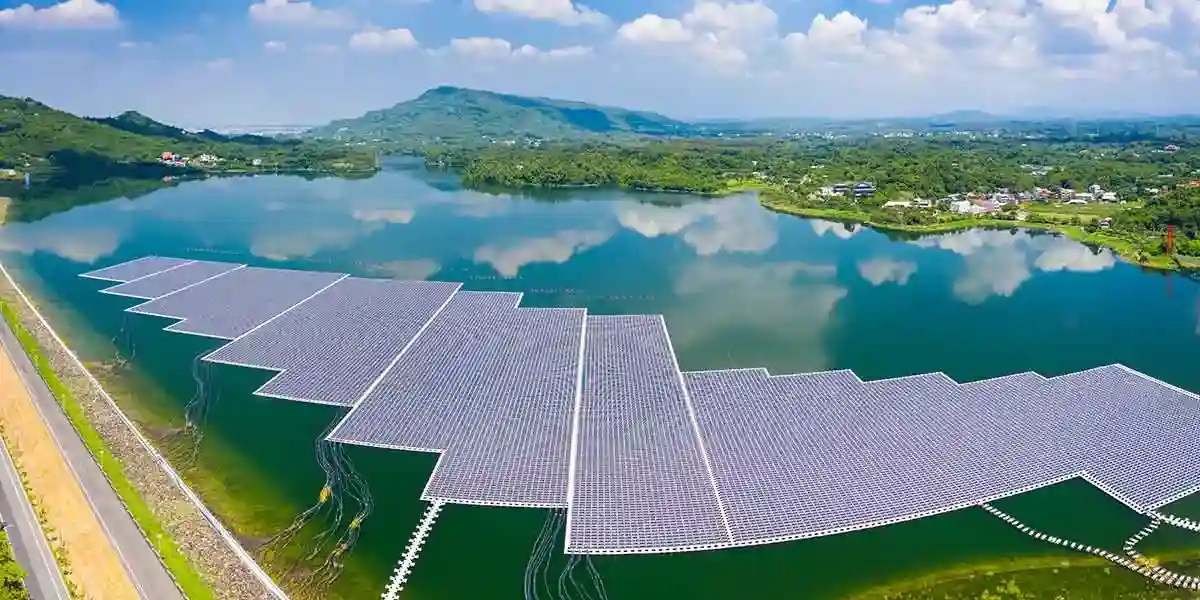
Mar 16, 2023
Blog Energy & Sustainability How Tech Advancements are Spurring the Growth of Solar Energy
The threat of climate change has prompted the urgent search for an alternative, clean source of energy. Governments have been investing in renewable energies like wind, hydroelectric, and tidal, but one source is emerging as the most cost-effective and efficient form: Namely, solar energy.
Solar energy has had a remarkable evolution. In recent years, the industry has hit some key milestones, with widespread installations, falling prices, and technological advancements abound. These factors have pushed the market into increasing prominence. Within the next five years, solar will overtake hydroelectric as the leading form of renewable energy, earning its place as the future of sustainability. BCC Research has predicted the global market for solar power technologies to reach $371.7 billion by 2027, growing at a CAGR of 15.3% from 2022-2027.
Solar energy has emerged as the best source of energy for the future. Some of the key reasons for its success include:
Without some significant technological leaps, the market for solar PV panels wouldn’t be where it is today. But as the population continues to grow, more innovation is required to match increasing demands.
One recent advancement was made by Chinese PV module maker LONGi. In 2022, the company achieved a power conversion efficiency of 26.5% for a gallium-doped, p-type heterojunction (HJT) solar cell based on an M6 wafer. The cell also achieved a fill factor of 86.08%.
As the demand for solar energy climbs, the market will continue to evolve. BCC Research’s recent report on the solar energy market offers a comprehensive guide for those navigating this fast-changing space. Download your complimentary overview or purchase the report in full.
The result was confirmed by Germany’s Institute for Solar Energy Research Hamelin (ISFH). As the world’s leading solar technology company, Longi has achieved continual breakthroughs in PV conversion efficiencies.
Another key invention comes from an international research group that studied how down-conversion (DC) materials can improve the performance of PV cells based on perovskite. The team found that such materials could result in an electric yield enlargement by converting ultraviolet (UV) light to visible while also providing UV shielding.
Floating solar, also known as floatovoltaics or floating solar panels, are a lesser-known solar technology. These are, quite literally, solar panels that float on bodies of water. Reservoirs, lakes, and irrigation canals are common choices. They can generate large-scale power and while they aren’t currently in widespread use, they’re seeing increased commercial applications.
Some of the key benefits of floatovoltaics include:
Agrivoltaics is another innovative land-saving solar energy concept. It involves using land for both solar panels and agriculture, with both sharing the same light. While it has great potential in promoting a circular economy and increasing production efficiency for agriculture, there are concerns that optimal crop yields would be more difficult to attain.
Agricultural land is generally incredibly well suited to solar. As opposed to barren land, more power can be generated on agricultural plots. This is primarily because photovoltaic systems tend to decrease in efficiency at higher temperatures, and farmland is usually found in moister areas.
With more and more land being used for solar, in the near future, it’s likely that competition for farmland will increase – agrivoltaics can help avoid this. Assuming a median power potential of 28 W/m2 as claimed by SolarCity, a Californian company now acquired by Tesla, one report estimates that covering less than 1% of the world’s cropland with conventional solar arrays could generate all the world’s current electricity demands. In the future, its likely that agrivoltaics will be increasingly adopted.
Solar energy is a broad industry with a high level of diversity, creativity and flexibility. The industry has a strong degree of tolerance for experimentation and risk-taking, which is resulting in the continued growth and acceptance of the industry’s legitimacy.
BCC Research is committed to researching the evolution of sustainable industries. We publish a high volume of reports on the energy sector – and membership with our library provides access to this entire catalog. To enquire into membership, simply get in touch with a helpful member of our team below.
We have also published a report on the megatrends characterizing healthcare, digitalization and sustainability. Grab your copy here.

Olivia Lowden is a Junior Copywriter at BCC Research, writing content on everything from sustainability to fintech. Before beginning at BCC Research, she received a First-Class Master’s Degree in Creative Writing from the University of East Anglia.

Electrical switches—devices that control the flow of electricity—are the backbon...

As the world accelerates toward net-zero emissions, hydrogen, and ammonia have e...

Hydrogen technology is widely used across industries like glass, fertilizer, met...

We are your trusted research partner, providing actionable insights and custom consulting across life sciences, advanced materials, and technology. Allow BCC Research to nurture your smartest business decisions today, tomorrow, and beyond.
Contact UsBCC Research provides objective, unbiased measurement and assessment of market opportunities with detailed market research reports. Our experienced industry analysts assess growth opportunities, market sizing, technologies, applications, supply chains and companies with the singular goal of helping you make informed business decisions, free of noise and hype.